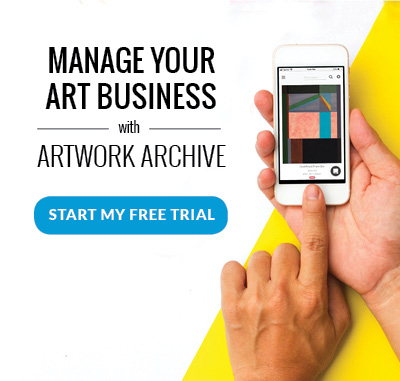
In season five of Broad City, Abbi Jacobson—an artist in real life and on the show—loses her art school sweatshirt in an NYC laundromat, kicking a series of disastrous interactions into motion.
While she’s on the hunt for the sweatshirt, she commits a series of faux pas, including creating a “missing” poster for her hoodie featuring a photo of her wearing it. The poster is then misinterpreted as an actual missing person’s poster and picked up by the local news.
After the situation spirals out of control and people assume Abbi herself is missing, she does finally find the MICA sweatshirt. Embarrassed by her fixation on the sweatshirt, she attempts a retributive act of goodwill, offering the sweatshirt to a homeless man outside the laundromat. In the end, the joke is on Abbi—and on the art community—when the homeless man turns up his nose telling Abbi that he could never wear that sweatshirt since he went to RISD.
But underneath the joke is the stereotype that even if you went to one of the most prestigious art schools, it is still extremely difficult to find success as an artist.
We seem to be up against the falsity in media, and the world around us, that creativity does not translate to profit.
But it can, it does, and it happens every day for artists that approach their art practice with the business-forward mindset of an artist-entrepreneur.
Here are 9 ways to embrace being an entrepreneur as an artist.
Think of yourself as a business from the start
We often see artists struggling to label themselves as a business person or even an artist at all. The thing is, no one else will call you these things if you don’t first identify with them for yourself.
So, what’s a great way to force yourself into thinking about yourself in this way? Making it official by writing it on a business card.
There is something transformative about having your name plus “artist” or “owner” in print. Plus, what is the first thing people will need in order to buy your artwork? A way to get in touch with you.
That’s why business cards are still a great way to lead with your brand and contact information. You should be easy to find and easy to contact. It doesn’t matter if you think your artwork should speak for itself. You need a way for people to get in contact with you both digitally and physically. If your personal website or online portfolio are not up to date, potential buyers will not be able to purchase your art.
Build up your contact list
A strong business card and a strong digital “contact me” or “about me” page will establish you as a professional. Professionals carry business cards; they have a professional “contact me” page. You’re a professional artist, don’t leave home without your cards, don’t leave your website or Artwork Archive profile incomplete, don’t neglect your contacts once you have them.
Remember that nurturing your contacts can create your best leads. You can use your existing contact list to reinforce your art business by sending follow-ups after the first meeting, checking in, and sending thank yous and updates.
Never underestimate the power of human connection.
When your contacts feel valued and included, their positive experiences with you will reinforce your success. Your contacts will value both your art and interactions and remember to share your work with their networks.
Make your own opportunities
Your online presence and business cards allow you to present yourself as an artist in impromptu situations and widen your opportunities. Likewise, reimagine your previous conceptions about where art should be viewed and sold.
Is your work represented by a gallery? Wonderful!
Are you not yet at this stage in your art career? No problem!
As Shakespeare said, “all the worlds a stage.” We say, all the world's a gallery! If you see a place you are inspired to show your work, get talking! If you meet someone you want to introduce to your art, show them an online gallery!
Are there other avenues for art sale that you haven’t considered? Do a quick search and see if there are any local or national curatorial companies that may be a good fit for your work.
Remember, your art could be bought and displayed in a home but could also make its way into a hotel, restaurant, or business. Request meetings to get to know different interior design and curation companies, present your work and get on their radar. Contact private curators, different galleries that you are interested in, or local art groups to see if you could exhibit or collaborate.

Have your price lists on hand
As an entrepreneur and artist, you need to be able to make opportunities for yourself as well as be ready for opportunities. Be ready for opportunities, have openness to new ventures, and be ready with your professional tools in hand.
Coffee shop? Public spaces? Libraries? New contacts to introduce to your art? Present yourself with confidence and professionalism.
Once you make the connection, be ready to present your work by giving a preview of your art via your website or a viewing tool like “Private Rooms” on Artwork Archive. Don’t underestimate the power of networks and communities. Let people know what art you have available with an inventory report. Assert yourself as a professional with strong tools that establish you both as an artist and as a competent, easy to work with, business person.
Create systems for your career
Then, make them part of your schedule.
Invest in your art and in yourself as an artist by thinking long term. Whether this means adopting a software system like Artwork Archive to organize, sell, generate and keep track of your records, or by finding solutions to needing more supplies or workspace. Think about simplifying processes and making the things you need to do work for you.
Likewise, embrace organization in the short term to bolster your effect long term. It is important to hold yourself accountable and follow through on your appointments and scheduling reminders. Use tools that allow you to integrate your calendar with your art business.
Generate a buzz around your artwork
So now that you have a professional presence, are seizing and creating opportunities, and have systems in place for your career, it’s time to create some noise!
You are your own best advocate. Reframe “shameless” into confidence in your self-promotion.
Don’t wait for a reporter to pick up a story about you as an artist, pitch to the press yourself. Let your local paper or arts magazine know about your upcoming shows. Reach out and invite the press to attend your events and send a sum up email giving information about why and how you created what you are sharing. Find arts blogs, like the Artwork Archive blog, and offer to be a guest writer. Think about creating symbiotic relationships.
Spread the word by sharing your profile. Take advantage of your public profile on Artwork Archive and share your work and bio to create hype and sales. Remember, too, that social media is not just for marketing and engaging your audience, but that you can create sales by sharing images of your work.
Get a handle on your finances sooner than later
A stitch in time saves nine. An ounce of preparation is worth a pound of cure. There are many ways to say the same thing, and probably a reason for all these sayings: start now, be happier later!
Reduce your future stress and save time in your present by getting in the habit of managing your finances well.
From the small to the big, each part of financial management is essential to your success. Make sure to file your taxes. Be prepared to pay taxes as a business.
Get in the habit of making clear records of your art sales and channel your inner accountant. Keeping track of details in the moment is easier than slogging through past records and correspondences. Use tools to make your life easier.
Create work in collections
Work smarter by thinking of your art in sellable and understandable groupings. By creating art in collections you are able to create consistency, gain insight into what is successful (artistically for you and on the market), and give yourself creative parameters to help you continue to produce new work.
You can build from past collections that did well, expanding and recreating themes and styles that were successful, to support you while you try new things. Collections help to build an art narrative and allow you to piece together your story as an artist.
Be clear about your goals
Entrepreneurs have both a vision and a plan to implement their vision.
What is your vision?
What are the goals that make up reaching this vision?
Take some time to identify where you want to be with your practice and with your art career. Now, within this vision, are there goals to reach and build upon? Within those various goals, can you identify tangible, small-but-powerful steps that will make your goals more readily available to you?
Recognize that there are things you can do every day that will improve your business.
Understand and embrace that there are many different elements that go into being a “successful” artist—however you choose to define it. These elements may also change over time depending on where you are in your career and where you want to be going with your art.
Identifying and then breaking out long-term plans into achievable chunks makes goal setting and committing to yourself as an artist doable. Take a moment to recognize where you are and where you would like to be.
Are you ready to make the shift from artist to entrepreneur?
Artwork Archive helps artists get organized and take charge of the business side of their careers.
With tools from invoicing to inventory tracking, Artwork Archive helps artists embrace being an entrepreneur and get back into the studio faster.
Try Artwork Archive's free 14-day trial to see how you can build your art business, promote your work and run your art studio without all the stress.



